The Tetrarch was an unusual horse in other ways, not just because of his distinctive spots. His sire, the grey French horse Roi Herode, won three times (one stakes race) in 24 starts before breaking down while in training at age five. He was described as a decent runner but a plodder, was short-coupled like an Arabian, but had a somewhat plain head. His owner, Edward Kennedy of Staffan Stud in Ireland, bought the horse to try and revive the Herod sire line, which had nearly disappeared. Roi Herode's sire, Le Samaritain, won several stakes including the French St. Leger before being sent to Uruguay and then Argentina. Roi Herode's dam, Roxelane, was a multiple stakes winner and very well bred.
The Tetrarch's dam was Vahren, a chestnut daughter of Bona Vista by Bend Or. She won three times in 12 starts and produced six other foals, one of which was sold to Russia and won the Russian Oaks. A full sister to The Tetrarch, Royal Quest, was sold to W. S. Kilmer of the United States. That line ended with some of her offspring going into the U.S. Remount Program. Another daughter was sold to France.
The Tetrarch was a late foal, born on April 22. As a yearling, he was a big, awkward, gangly colt who looked very unpromising, especially with his odd colouring: black and white spots on a chestnut coat that was changing to steel grey. He was purchased by former amateur steeplechase jockey Henry Seymour “Atty” Persse, who had trained the horse's half-sister, Nicola. Unfortunately, he was short of funds and needed cash, so Persse reluctantly sold the colt to his cousin, Major Dermot McCalmont, M.C., M.F.H., but Persse stayed on as trainer.
In April of his two-year-old year, The Tetrarch was sent out to train with a group of advanced two-year-olds and shocked everyone by blasting ahead of them easily, winning at a canter. After that, he was tested against a quality older runner and a pair of good two-year-olds, and he beat them in a canter, too. One of those beaten youngsters became a stakes winner his first time out. The Tetrarch was tried twice more against the older horse, a staunch handicap winner, once at level weights and finally with The Tetrarch carrying 9 stone to the handicapper's 8 stone, but each time it was no contest, with the youngster winning as he pleased. Clearly this spotted colt was special.
As a two-year-old, The Tetrarch started seven times and was undefeated, six of his wins being stakes. All his races were at five and six furlongs. He was champion two-year-old of 1913. He was scheduled to race at three at longer distances, but injured a front leg late in his two-year-old year and had to skip the Two Thousand Guineas. He re-injured the leg during a workout in May 1914 while preparing for the Epsom Derby, and McCalmont and Persse chose to retire him. Both injuries were caused by over-reaching, with a hind hoof grabbing a front one.
“To be on him was like riding a creature that combined the power of an elephant with the speed of a greyhound,” said champion jockey Steve Donoghue, who at that time was on retainer as Persse's rider. In an interview with the Sydney Morning Herald in 1953, Donoghue said that The Tetrarch “would have won the classics by lengths.”
Persse (1869-1960) described The Tetrarch as having a beautiful head and intelligent expression, with remarkable muscular development and straight, powerful hind legs. He galloped absolutely true at speed with great length of stride, but “plaited” in front at a walk or canter. Physically, he epitomized the words “race horse” with his long, lean appearance, reach of neck, straight legs and overall look of elegance and quality. At two, he was as big and developed as a four-year-old.
“I don’t think that he would ever have been beaten, over any distance,” said Persse. “He was a freak and there will never be another like him.”
In temperament, The Tetrarch was docile, and only two things could cause his rage to flare up: being shod by a stranger and taking medication. To avoid the first, he had his own farrier who travelled with him.


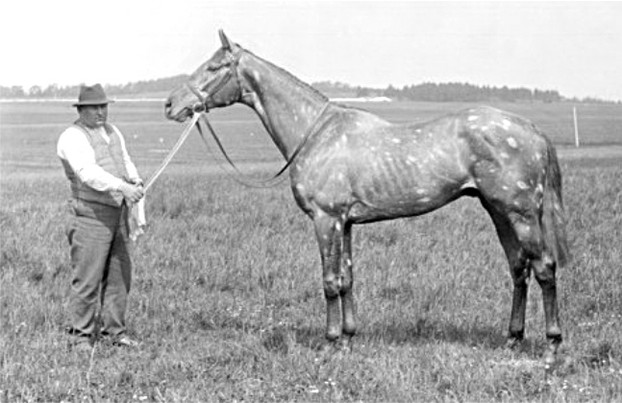
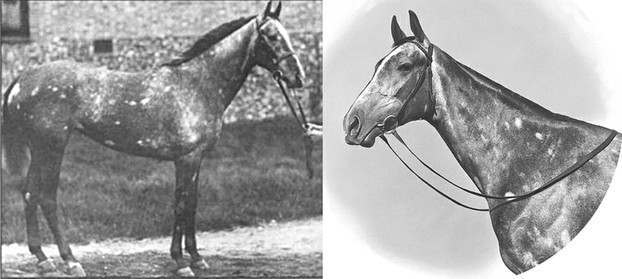
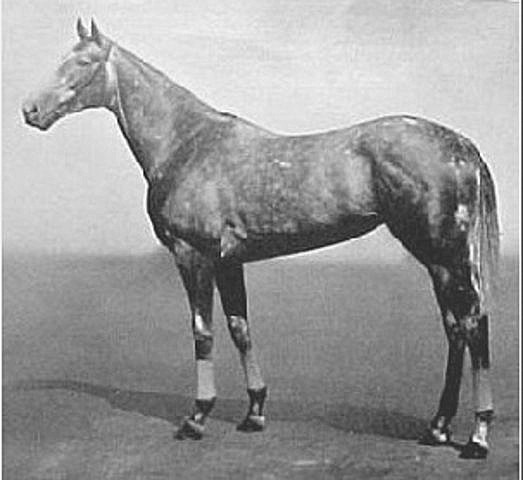
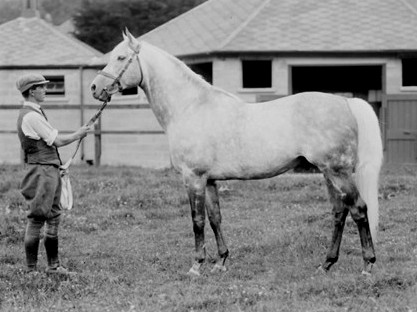
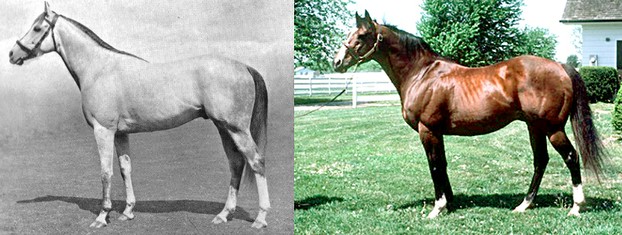
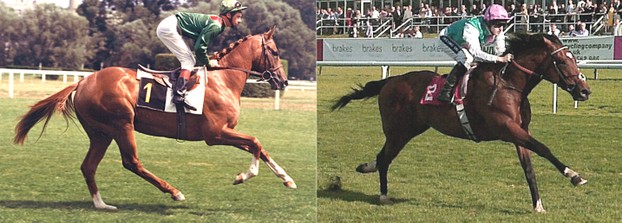
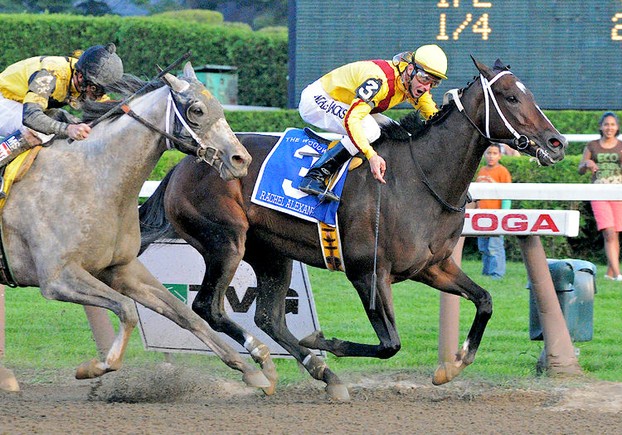




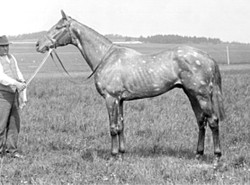

 Versatile Nova Scotia Duck Tolling Retrieverson 08/02/2014
Versatile Nova Scotia Duck Tolling Retrieverson 08/02/2014
 Should You Spay or Neuter Your Puppy?on 08/12/2014
Should You Spay or Neuter Your Puppy?on 08/12/2014
 Horse Racing History: the Preakness Stakeson 05/15/2014
Horse Racing History: the Preakness Stakeson 05/15/2014
 Dinosaurs Will Be On Display in Trenton, Ontario, Canadaon 07/29/2013
Dinosaurs Will Be On Display in Trenton, Ontario, Canadaon 07/29/2013

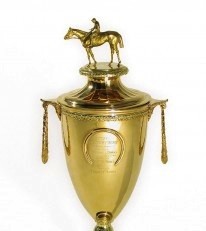
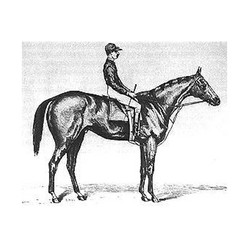
Comments
It's interesting that Tetrarch looked black-spotted chestnut when young and white-spotted gray when older.
It's a natural progression when one mulls that black represents all colors in one place and white no colors in that place, correct?
Great post and very well written ;) Learned stuff actually!